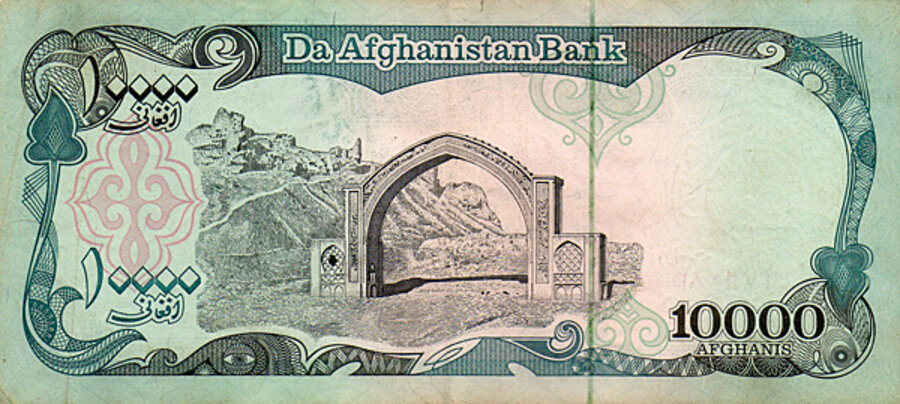Pictured: 10,000-afghani note, acquired in Khwaja Bahauddin in 2001
After the Islamist government took control of Kabul in 1992, it began to purge things in Afghanistan’s public space that it judged to be in violation of Islam’s general taboo on human imagery. It was also a convenient way to erase the visages of the country’s previous heads of state.
The man-less currency issued in 1993 by Da Afghanistan Bank intersected neatly with the Taliban government’s even more extreme edicts when it wrested control of Kabul in 1996 from the weak government of the late Burhunaddin Rabbani.
This 10,000-afghani note features the arch of Qala-e-Bost in what is now Lashkar Gah, the capital of the troubled Helmand Province. Dating back to the 11th century, it remains a stunning relic of Ghaznavid architecture.
In October 2002, the civil war-era currency was replaced, and the magnificent ancient arch was placed on the new 100-afghani note.





